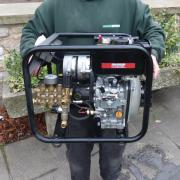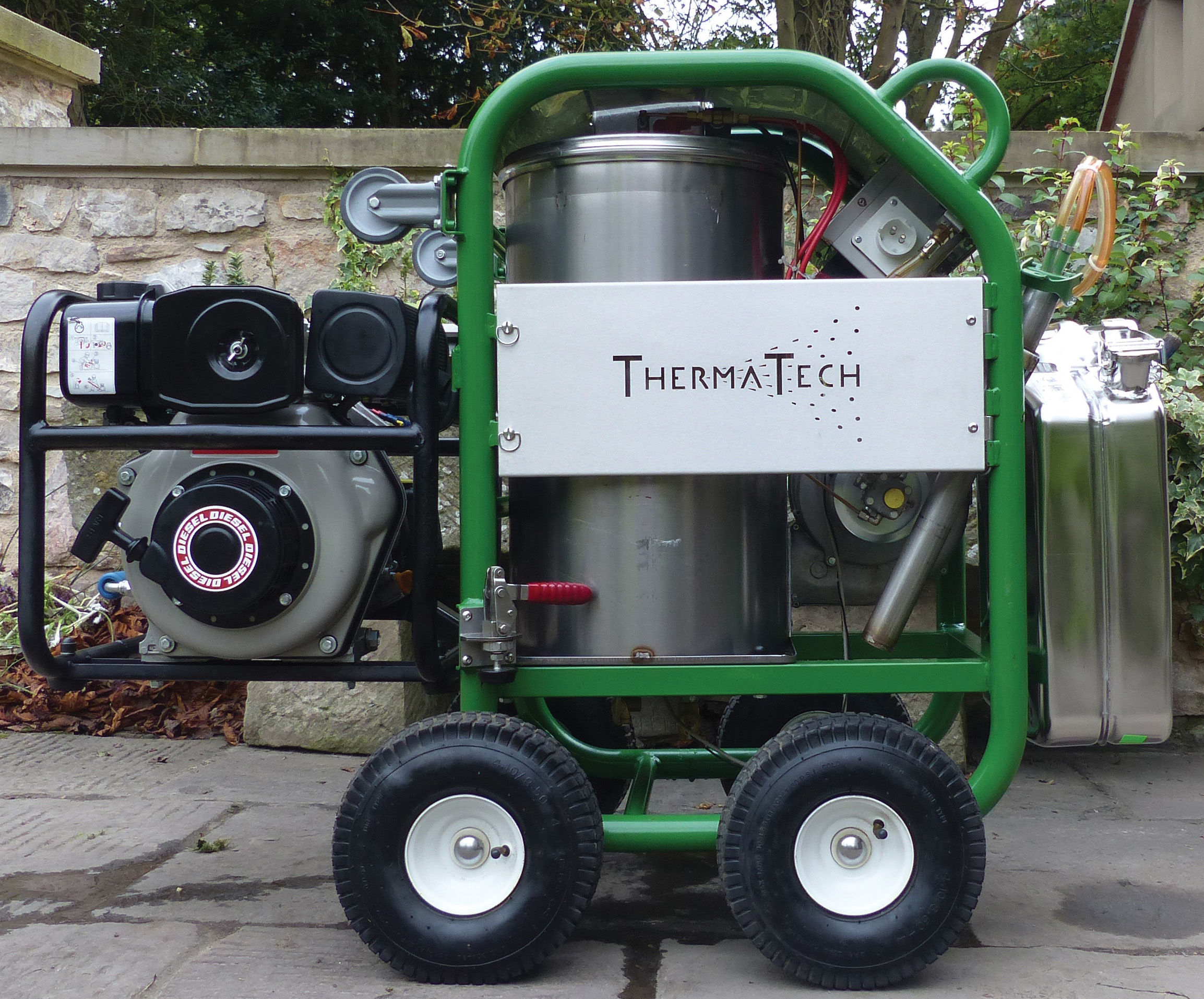Restorative Techniques has applied for another patent on its latest development on the new model of its ThermaTech superheated water cleaning system.
It was as long ago as January 2011 that it applied for and was subsequently granted its first patent to protect the innovations on ThermaTech. Those innovations have helped make ThermaTech the cleaning system of choice for many stone and conservation companies and the architects who specify the cleaning on projects such as the Royal Crescent in Bath, where the company NEST is now completing its latest phase of work. NEST owns its own ThermaTech and has used it and various other Restorative Techniques’ wide range of cleaning products and chemicals to achieve some spectacular results on five of the 30 façades of the Crescent.
But Restorative Techniques recognises the importance of continuing innovation to deliver real improvements to the stone cleaning sector, hence the latest patent application.
The additional new system is called the ThermaTech INOX, which is a diesel powered unit providing all the energy needed to run ThermaTech. Restorative Techniques says it brings advances in technology, safety and performance that will allow it to be supplied as a premium option to the ‘Standard’ ThermaTech system, making ThermaTech even more versatile for the industry.
In developing the ThermaTech INOX, Restorative Techniques says it has taken as a priority that site equipment must be safe, portable and high performance. Consequently it exceeds all existing electrical safety specifications and does not require the portable appliance testing (PAT) of higher voltage equipment.
Main features are:
- A single power unit for providing water pressure and electricity – no need for any form of external electricity supply
- No petrol needed; the system runs completely on diesel
- Extremely compact – it can be hung on a ThermaTech boiler or placed on the floor as a stand-alone water pump / generator unit (44cm high, 43cm wide and 60cm long)
- It is low voltage and even includes USB outputs for powering / charging equipment such as mobile phones, cameras, lighting and so on.
- It uses less than 1 litre per hour of fuel running at full capacity.
 This new unit has been invented and developed by Restorative Techniques with reliability and performance in mind, while remaining compact and light for ease of use. And its unique design features are being patented to stop them being copied, so they will not be available from any other supplier.
This new unit has been invented and developed by Restorative Techniques with reliability and performance in mind, while remaining compact and light for ease of use. And its unique design features are being patented to stop them being copied, so they will not be available from any other supplier.
The unit drives the water pump directly, cutting out the need for an inefficient Vee-belt. It also powers a generator to provide more than 500Watts for the boiler from a 16A socket (as well as providing power through the USB outputs).
When combined with the new premium model of ThermaTech boiler, the ThermaTech INOX system can deliver 9.5 litres of superheated water (150ºC) per minute at an impressive 170bar. With this performance, the system is extremely capable, even with two operators working from a single ThermaTech unit, for applications such as paint removal.
The increase in pressure means a broader delivery nozzle can be used for an even faster work rate. And being further from the surface and spread over a wider area there is less risk of damage (remember the school physics example of an elephant’s large foot damaging a wooden floor less than an adult person wearing stilettos?).
Nevertheless, however foolproof it is, cleaning still has to be carried out by a skilled operator to achieve the result required and Restorative Techniques make sure all the operators who use its systems are trained.
ThermaTech is not the answer to all stone cleaning questions, which is why Restorative Techniques also makes the VorTech gentle abrasive cleaning system and sells a variety of other cleaning products, such as latex or the special formulation poultice it developed for DBR at the Houses of Parliament (see main story). There often is no easy answer when it comes to cleaning, which is why Restorative Techniques offers a consultancy service to carry out analysis and tests, so it can propose the right regime for specific projects.
And because it knows its customers’ skills and competences, it offers a referral service to architects and specifiers of operating companies that match the scope and the needs of a particular project.
Restorative Techniques Director Julia Fairchild says: “We believe it’s important that clients and architects are aware that not all contracts are best undertaken by all contractors. There can be so many other variables and requirements for additional services, such as stone replacement or other renovation work.”
It is not a service restricted to this country. Restorative Techniques’ products are used overseas as well as in the UK and the company is providing contractor referrals even as far away as Australia.

